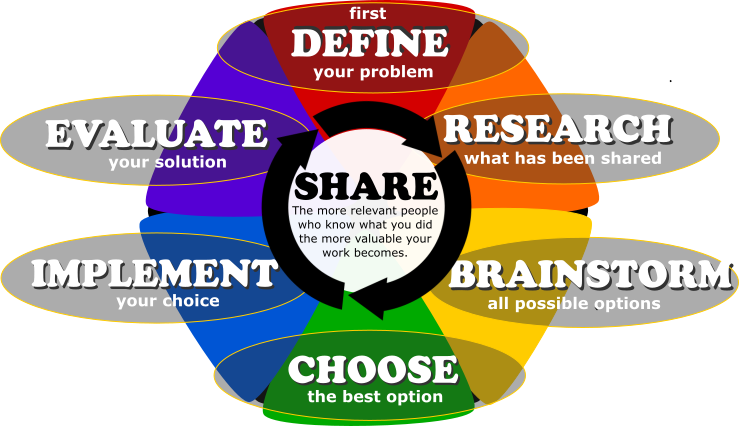Day 08: Running a Rubric through the EDP
Last week you worked to draw up a rubric you could use to meaningfully assess whether students followed the EDP when desiging a Bug Out Bag packlist. Most of you found it disorienting and did not know where to begin.
So let's take some time today to walk through what ought to happen when designing a rubric.
- Define your problem
- Research what has been shared
- Brainstorm all possible options
- Choose the best option
- Implement your choice
- Evaluate your solution
- Define the next problem to solve
That should look familiar, right? In our case, the problem is that we need to be able to evaluate whether a project accomplished the educational goals set out for that project (this is where we Define our problem). In our case, we know that the project is part of an EDP Review unit, so odds are good that the project needs to meaningfully walk us through the EDP. In addition, a rubric needs to be simple, otherwise it will be a pain to apply. Sometimes complexity is unavoidable, but in the case of class projects we can usually keep things simple.
The way we get at these needs is we ask ourselves some simple questions:
- Did the project show evidence of having gone through the EDP at least twice?
- What would that kind of evidence look like?
- Is every student getting an equal opportunity to prove that they have accomplished the project's learning objectives?
That's part of the Research phase of the EDP. We will also look over actual project results to inform this step. You may additionally do some Google searches on other rubrics people have developed to evaluate student projects, but be aware that you should set a time limit on that task, as it is a deep rabbit hole and you could get lost down there.
Now we're at the Brainstorming phase....
Okay. So all of that is intended to remind you that when I give you a problem you don't already know how to solve, I expect you to apply the EDP to get there. Be logical, be supportive of one another's ideas, and keep moving forward through the obstacles until you reach your objectives. The mission is everything.
Now I want you to re-do this rubric, and follow the EDP. Do it right.
